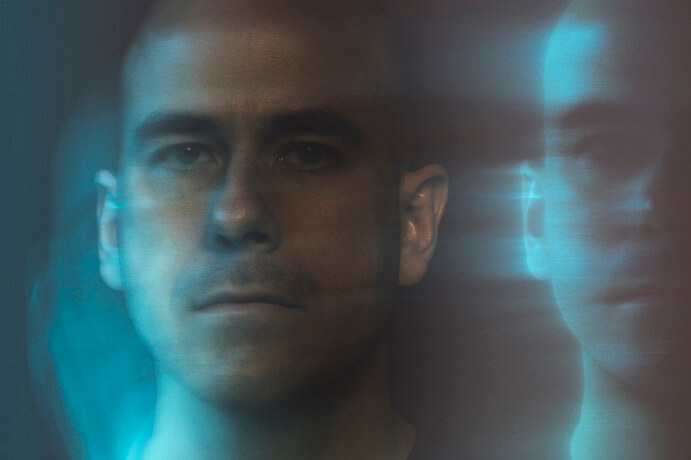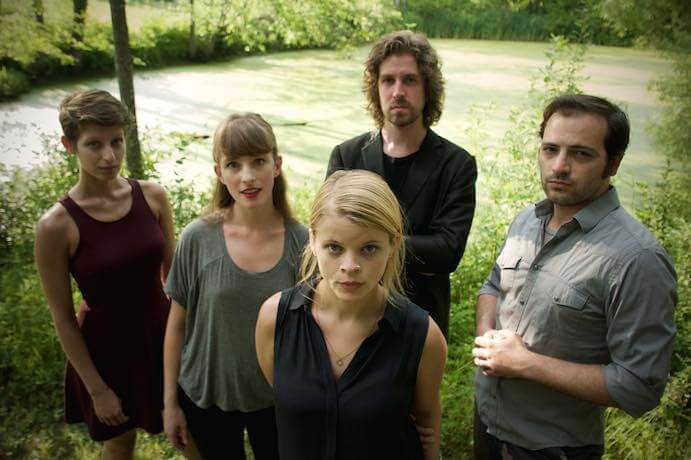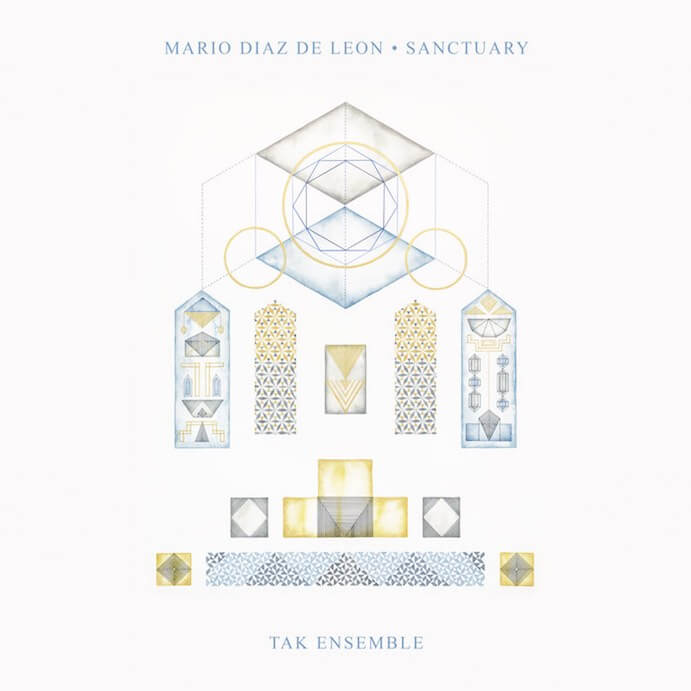For better or worse, Sanctuary is the perfect title for Mario Diaz de Leon’s most recent record. This collection of six pieces for the TAK Ensemble and Diaz de Leon himself on synth offers the listener a refuge, a chapel of contemplation, with angelic voices and instruments swathed in cavernous reverb. It sounds good: the composer’s discerning ear for timbre and harmony and his sense of fore- to middle-ground timing are undeniable. The TAK Ensemble plays with great discipline and sensitivity. Many listeners will be satisfied to luxuriate in this appealing sound-world; surely an argument could be made that in 2017, of all years, we should take our therapeutic spirituality wherever we can find it.
Something about the presentation of this record, however, is telling me that I ought to expect more. Identifying Diaz de Leon’s aesthetic touchstones, the press materials cite “the mystically oriented modernisms of Stockhausen, Scelsi, Messiaen, and Dumitrescu.” The catalogues of this multi-generational group are mined throughout Sanctuary for material that belongs unquestionably to the topical category of “the mystical;” in almost every piece on the record, deliberately enigmatic things happen in deliberately enigmatic contexts. Every low note on the marimba, every pure vowel without vibrato, every envelope generated by the synthesizer’s VCA is suffused with cosmic import. The music of Sanctuary connotes the metaphysical through similarities to music that is understood to be about metaphysics, but—unlike the best music of the composers into whose lineage he writes himself—the experience of listening to it is not a metaphysical experience.
Why not? For one, I suspect that the claim that Diaz de Leon navigates his work by the guiding stars of Stockhausen, Scelsi, Messiaen, and Dumitrescu doesn’t tell the whole story; without denying the formative influence of those celestial bodies, the compass and sextant of Sanctuary are American postminimalism and European “holy minimalism.” Maybe these currents went unmentioned because they’ve become a kind of background radiation for composers of Diaz de Leon’s generation and mine.

Mario Diaz de Leon–Photo by Ryan Michael Kelly
Arvo Pärt’s name makes for a less hip and intriguing pull than Iancu Dumitrescu’s, certainly, but the sense of “emphatic stasis” in Blades of Light—the distribution of events in time and its occupation of a rhetorical foreground—owes as much to the former as to the latter. Heart Cave is richer: the ambiguity between narrative and process contributes to a real, palpable tension. Its ending (practically an authentic cadence!) will no doubt be described as “cathartic” by another reviewer.
The record’s title track is a diatonic vocalise with synthesizer accompaniment—”just” a diatonic vocalise with synthesizer accompaniment, one is tempted to say, but indulging that temptation would mean putting a “just” before the description of every piece on Sanctuary because they all seem to occupy the interior football on a Venn diagram of savvy contemporary concert music and indie media soundtrack. (Whatever else it might be, this record is an affirmation that the categories of “film music,” “game music,” and more generally “background music” now admit a much wider array of sounds than they used to, so I guess it’s a useful generational check-in.)
Not until Tongues of Fire did I finally start to grasp the specificity of Sanctuary’s vocalism. At first it seems to have come more or less directly from Reich’s Tehillim, but for the occasional ripple in its smooth façade; the appearance and disappearance of these ripples are among the more genuinely mysterious phenomena (as opposed to phenomena that simply betoken mystery) on the record. As noted above, Diaz de Leon could scarcely ask for a more faithful set of collaborators than the TAK Ensemble; among them, vocalist Charlotte Mundy is asked to do the most particular work.

TAK Ensemble–Photo by David Bird
Mario Diaz de Leon knows Mantra and Anahit and Turangalîla; it’s a safe bet that he’s heard the Nonesuch recording of Tehillim too. And Diaz de Leon’s backward glance takes in more than these mystical modernisms and mystical non-modernisms: the sound of his synthesizer seems to have come straight from the early 1980s. More than once, Sanctuary’s synth sounds prompted me to wonder whether I might be the target of an unlikely cross-promotional tie-in with the second season of Stranger Things.
The more of Sanctuary I heard, however, the less unlikely it seemed. Just as that Netflix drama is an affectionate pastiche of Stephen King, Steven Spielberg, Joe Dante, and John Carpenter—a sanctuary for those who are comforted by the spooky—Sanctuary is a sanctuary for those who are comforted by the cosmological poetics of certain kinds of contemporary concert music. I count myself among them. The danger is that we kid ourselves that our sanctuary is more critical or advanced than anyone else’s; it isn’t, even though its musical material sounds, in a general sense, like it ought to be. If Mario Diaz de Leon wants to fashion a new, sophisticated, vivid kind of spiritual minimalism to fill the void left by the departed Gorecki and Tavener, he’s off to a great start. If he wants to stand alongside the likes of Stockhausen, Scelsi, and Messiaen, the job is much bigger than he seems to think it is.




















